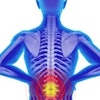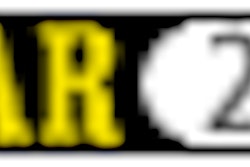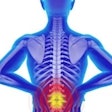
CLEVELAND - Technologist productivity is a major point of contention in the ongoing tussle between the two primary modes of digital x-ray acquisition, computed radiography and flat-panel digital radiography. At issue is whether DR’s higher cost can be offset by the productivity gains that may occur when RTs no longer need to hand-carry imaging cassettes to CR readers or film processors.
Neither side scored a knockout blow in a series of presentations on Friday at the SCAR conference. While technologists using DR clearly had a productivity edge, CR made a good showing, and may still hold the price-performance edge in some situations.
Researchers at the Baltimore VA Medical Center analyzed the workflow steps taken by technologists involved in both CR and DR image acquisition. The group categorized the main workflow areas into five time periods: patient preparation, patient positioning, exposure, quality control, and total study time, according to Stephen Severance, a research assistant at BVAMC.
The group based its findings on 81 exams, 40 of which were CR studies and 41 consisting of DR exams. The CR exams were conducted on an AC-3CS reader (Fujifilm Medical Systems USA, Stamford, CT), set up in a shared-plate configuration, with the reader processing studies acquired in three x-ray rooms. The DR unit was a Revolution XQ/i dedicated chest unit with its own QC workstation (GE Medical Systems, Waukesha, WI).
There were no statistically significant differences between the modalities for patient preparation time or exposure time, Severance said. DR showed a major advantage in terms of reducing patient positioning and quality-control times, however. This time savings helped reduce the total time of DR studies compared to CR.
Positioning time was cut almost in half with DR, according to Severance, as RTs needed to load a fresh plate after taking the first image when taking two-view chest CR studies.
DR quality control was cut to a fraction of that needed for CR because RTs were able to view images in the room, rather than go to a remotely located QC station. The group found that 81% of the total time savings conferred by DR occurred during the QC process, Severance said.
Severance noted that the layout of BVAMC’s x-ray department put CR at a disadvantage. The use of a centralized CR reader to serve three general radiography rooms created a technologist bottleneck as RTs waited to process cassettes, he said.
New in-room CR systems overcome this limitation by placing both the plate-reading and QC functions in the same room where the image is acquired. These systems are typically cheaper than centralized readers.
"If a plate reader is going to be used, we recommend that it be in-room, with a QC workstation," Severance said. "This allows for image identification, acquisition, review, and quality control by a technologist directly at the console. It also allows the use of workflow-enhancing software, such as modality worklist and performed procedure step."
If a centralized CR plate reader is used, it should feature a multistack reader, which can accommodate multiple plates. Advanced image-processing software should also be used to decrease technologist image manipulation time.
The group is planning further studies comparing different configurations of CR to DR, as well as investigation into whether certain imaging applications are more appropriate for one modality rather than the other.
During the presentation’s question-and-answer period, one session attendee pointed out that installing a CR reader in every radiographic room would negate much of the capital equipment cost savings that CR enjoys over DR. But BVAMC found that the extra cost of putting CR in each room -- about $20,000 per machine -- was easily offset by increased RT productivity, according to Dr. Bruce Reiner, who also participated in the research.
In a subsequent presentation by researchers from the University of California, San Francisco, a group examined CR, DR, and plain-film x-ray in an outpatient clinic operated by the university. They focused their study on upright chest applications, according to Katherine Andriole, Ph.D., who presented the work. The systems involved in the study were an antiquated Picker International chest x-ray system, a Revolution XQ/i DR unit, and a SmartCR in-room CR reader (Fujifilm).
The images were collected at two outpatient locations. A DR system was used at UCSF’s Ambulatory Care Center, with a throughput of about 50 patients a day, while CR was employed at the university’s Mt. Zion Community Hospital, which images about 30 patients a day. The Picker x-ray unit was operating at the ambulatory care center. A total of 750 chest exams were taken.
In addition to measuring patient throughput and how long it took images to become available, the UCSF group asked technologists to rate each system based on speed, performance, ease of use, and reliability.
They found that analog x-ray had a throughput of 8.2 patients per hour, compared with 9.2 for CR and 10.7 for DR. Images were typically available 29.2 minutes (± 14.3 minutes standard deviation) later with conventional x-ray, compared with 6.7 minutes (± 1.5 minutes) for CR and 5.7 minutes (± 2.5 minutes) for DR.
Fifteen technologists with experience on either DR or CR unanimously preferred the digital modalities to the film-based chest unit. The DR system got slightly higher usability ratings from the RTs than the CR system in almost all categories, although a DR device malfunction during the study hurt its reliability scores versus CR.
Both CR and DR can offer major productivity advantages over analog x-ray for facilities with throughputs of 30-50 patients a day, Andriole said. Both also can also sharply reduce the amount of time it takes to produce images, thus improving the overall efficiency of the department.
"We are able to release our patients from radiology sooner, and provide services to our referring colleagues much faster," she said.
With respect to CR versus DR, the group believes that CR performance is roughly equivalent to DR. As in the BVAMC study, DR probably enjoyed a competitive advantage because a dedicated chest DR system was being compared to a multipurpose CR unit, Andriole said.
Ultimately, procedure volume is probably the best indicator of whether to deploy DR or CR. "Volume is the major factor that you need to consider as to whether you go to CR or DR," Andriole said. "In low-volume settings, is it really cost-effective for DR? My gut response is, not at this time."
By Brian CaseyAuntMinnie.com staff writer
May 3, 2002
Related Reading
CR, DR vendors debate digital x-ray methods at SCAR meeting, June 4, 2000
Copyright © 2002 AuntMinnie.com



















